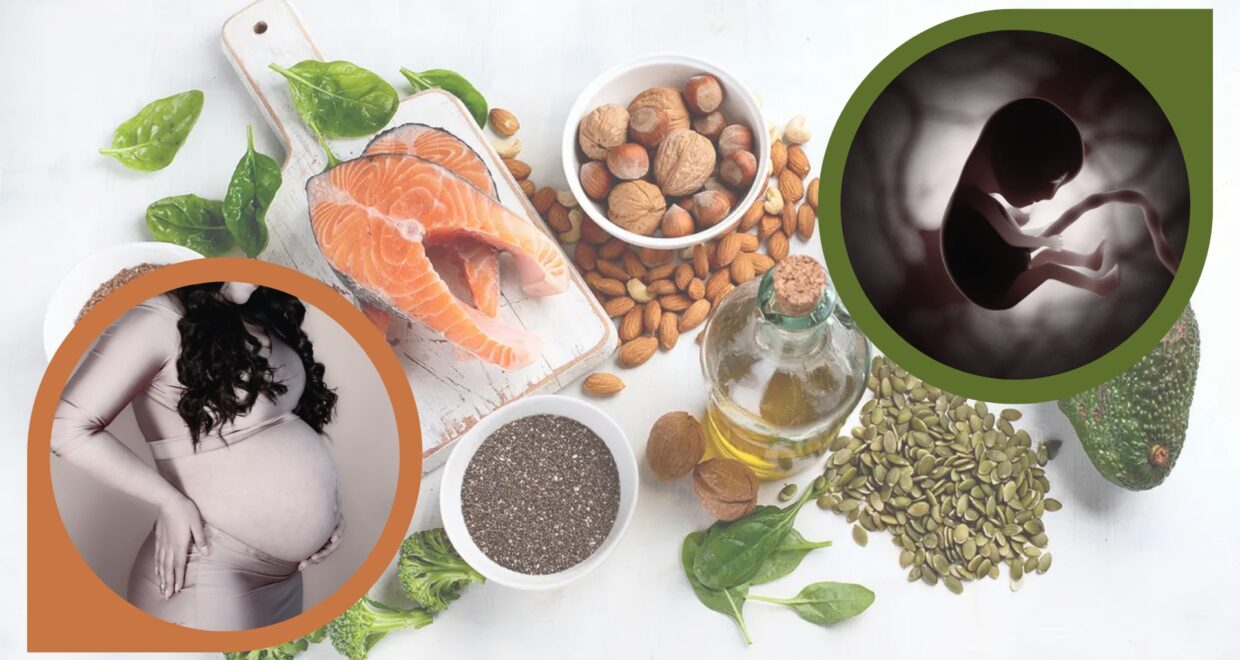Fetal Dependency on Placental Fatty Acid Transport During Pregnancy
The Paper of the Month for January is ‘Fetal dependency on maternal fatty acids: a pilot study in human pregnancies using the natural abundance variation of 13C‘. The blog is written by author Manuela Simonato, and the paper is published in the British Journal of Nutrition.
Optimal growth of the human fetus and the newborn infant is associated with better health and neurodevelopment in infancy and also the benefits of early growth persist into adult life and during aging.
Fetal growth restriction on the other hand is associated with suboptimal neurodevelopment in infancy, lower academic achievements in adulthood, and also with higher rates of cardiovascular and respiratory adverse events.
Fetal growth is higher than in any other period of life and information on the determinants of early growth is of paramount importance but still very poor.
One fundamental question lies in the reliance of the human fetus on the nutrient availability from the pregnant woman via a healthy placental transfer of all key nutrients.
Next to the efficiency of nutrient delivery from the pregnant woman to her fetus, there is the efficiency/maturation of the fetal metabolic machinery for the endogenous biosynthesis of key nutrients.
More information is needed on the fetal biosynthesis of non-essential, semi-essential, and the derivatives of essential nutrients.
In this framework, our group is trying to get more insight into the growth and nutrition determinants of the human fetus and newborn infants.
Metabolic studies in pregnant women, fetuses, and newborn infants require non-invasive methods and thus, we used the variations of the stable isotopes normally present in all natural foodstuffs.
In this pilot study, we used the natural variation in the 13C/12C ratio (δ13C) to follow the fate of selected fatty acids like: arachidonic acid (AA), docosahexaenoic acid (DHA), palmitic, oleic, and linolenic acid in the human pregnancy. This method represents a viable and safer alternative to the use of stable isotope tracers obtained by biological or chemical synthesis.
To this aim, we enrolled 28 healthy pregnant women, 18 of them were supplemented with DHA since pregnancy week 20. Cord and maternal blood samples were obtained at delivery. We measured both plasma phospholipids’ fatty acid amount and composition and the (δ13C) of selected fatty acids.
Key findings:
- Fatty Acid Transfer: The placenta efficiently transfers fatty acids, especially DHA, from the mother to the fetus. This is particularly important in the last trimester when the fetus’s brain is rapidly developing. DHA levels in the fetus are higher than in the mother, reflecting the fetus’s high need for DHA.
- Effect of DHA Supplementation: Women who were given DHA supplements (either from algae or fish oil) during pregnancy had higher DHA levels in both their blood and the blood of their newborns at delivery, compared to women who did not take DHA supplements. DHA supplementation does not appear to interfere with the fetus’s supply of other fatty acids, like AA.
- Fetal Lipogenesis: The fatty acids (δ13C) in the fetus’s blood closely match those in the mother’s blood, suggesting that the fetus is not synthesizing significant amounts of fatty acids but is relying on what is transferred through the placenta. This is, above all, evident for DHA.
The study highlights that maternal diet and fetal fatty acid status are tightly interlinked. Therefore, the maternal diet has a crucial role in the fatty acid supply during pregnancy and in ensuring the healthy development of the fetus. From this pilot study the fetus, in normal pregnancies, appears to rely almost entirely on the mother for fatty acids with little evidence of endogenous fatty acid synthesis in general, and particularly of the long-chain derivatives from essential fatty acids, namely DHA and AA.
The method reported in the present study can likely be applied to field studies, to subjects with selected clinical conditions, and when using/comparing different diets/dietary supplements.
Each month a paper is selected by one of the Editors of the six Nutrition Society Publications (British Journal of Nutrition, Public Health Nutrition, Nutrition Research Reviews, Proceedings of the Nutrition Society, Journal of Nutritional Science and Gut Microbiome). Take a look at the entire Nutrition Society Paper of the Month Collection.









